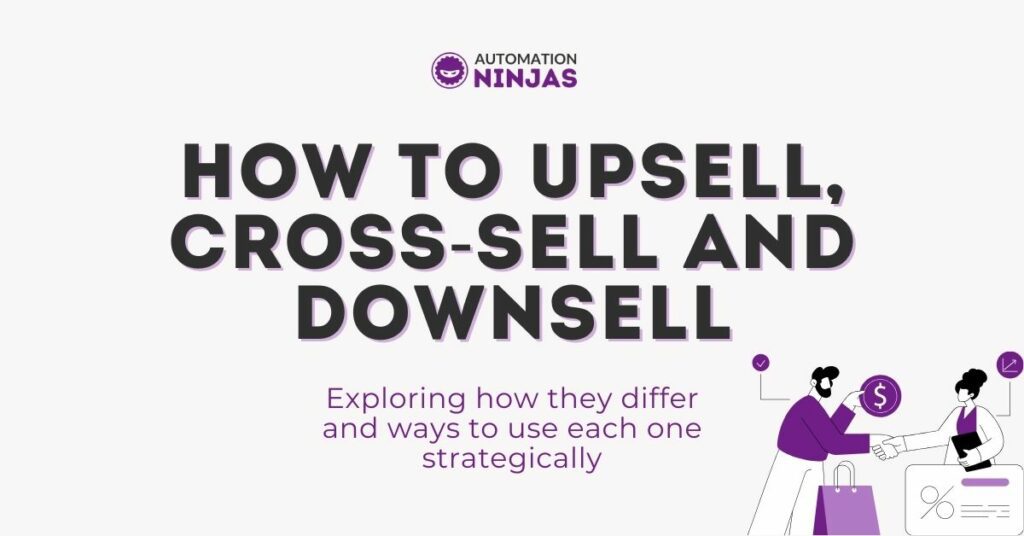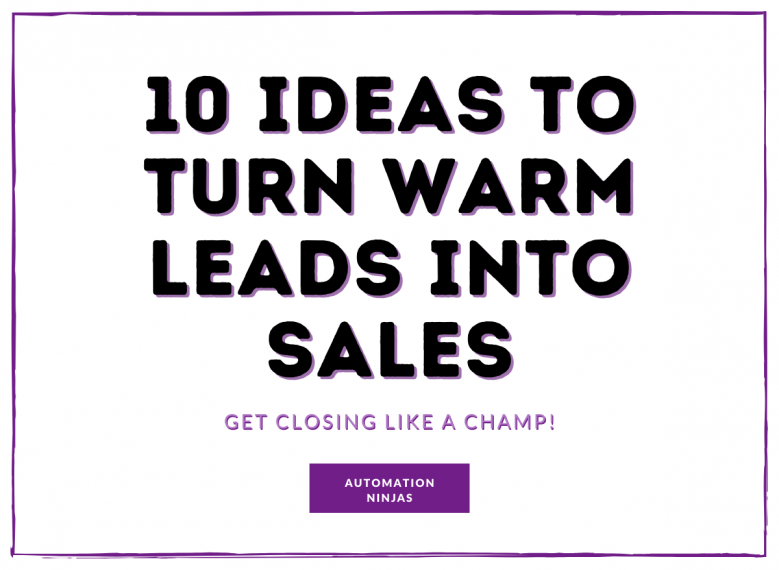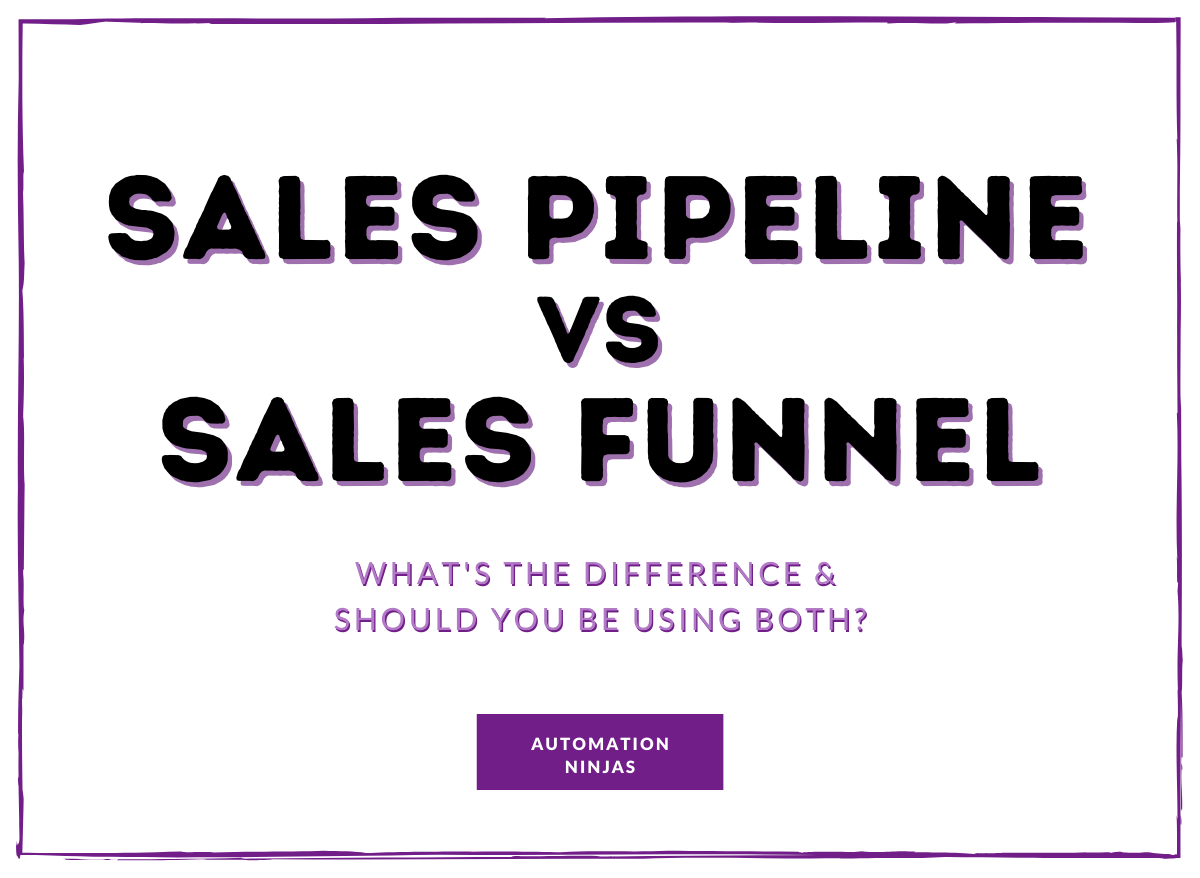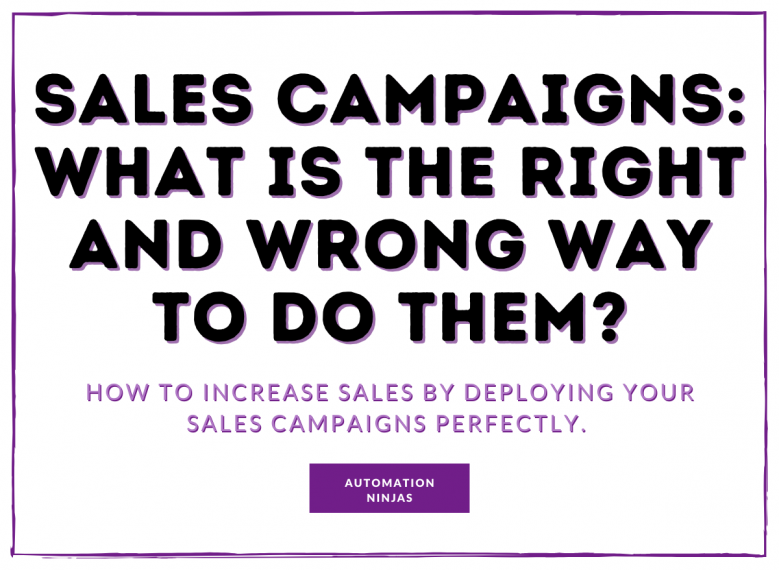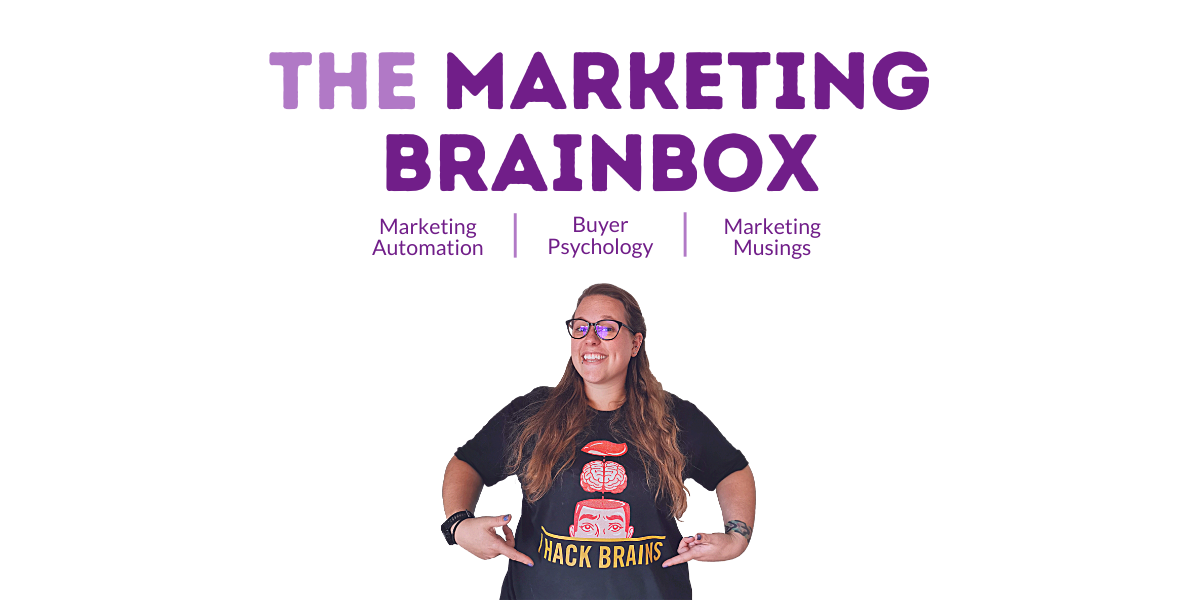AUTHOR: Kenda Macdonald
As a dedicated consultant, I specialise in elevating businesses through top-tier consultancy, fueled by a deep understanding of buyer psychology cultivated over years of experience. My expertise lies in crafting marketing and sales strategies that propel businesses to new heights by leveraging insights into the buyer brain. As a bestselling author, public speaker, and strategist, my passion for decoding human behavior drives me to innovate and deliver unparalleled results. I've designed a methodology adaptable for all types of businesses, ensuring transformative customer journeys and experiences.
Marketing is a cesspit of jargon and nonsense words, conflicting definitions and terms that not only make no sense but mean various different things… And, upsell, cross-sell and downsell are repeat offenders.
After all, why use one term when we can make it super complicated, but fancy-sounding!

Let’s put a stop to all that rubbish and take a look at what we actually mean when we talk about upselling, cross-selling and downselling. We’ll also chat about how to use them appropriately and how to make sure you’re successful with your strategies.
Defining what an upsell is
Upsell is an umbrella term. It covers the tactics involved in getting your brand new customer to spend more money with you.
Upselling is a strategy used to increase both customer lifetime value (the amount of money a customer spends with you over their lifetime) and average order value (the amount of money a customer spends on one purchase).
And, although it is generally used to get a bump up in revenue from customers that have *just* purchased something from you, it can be split up to encompass spending that extra dime before the sale (pre-sales) or after the sale (post-sales).
There are a few different ways you can get your customer to spend extra, by:
- Buying a more expensive item [pre-sales]
- Upgrading their experience [post-sales]
- Adding on products to their order
- Trying options they may not have considered before
Why upsells work so well
Upsells work well because your customers ultimately want the very best they can afford. If they can get something a little bit better, but still close to budget, they will stretch for it.
But it isn’t just a desire for more, it’s also loss aversion.
We suffer from many different types of cognitive bias - little errors our brains make in day-to-day decision-making and judgements. As Kahneman and Tversky put it “Losses loom larger than gains”.
"Loss aversion means we feel the negative impact of losing something far more than we feel the positive impact of gaining something." Kenda Macdonald
Part of the effectiveness of upselling comes from your customers feeling like what you have on offer is a really good deal, and they’d lose out if they don’t take it.
For businesses, upsells offer you phenomenal benefits ranging from increased average order value and customer lifetime value, to increased customer retention and satisfaction. Amazon increased its revenues by 35% in 2006, when they added in the “customers also bought” cross-sell option.
And boom! Suddenly we’ve thrown another term into the mix!
As I said, upsell is actually an umbrella term. This is in part why it can be so confusing.
There are 3 parts to the umbrella of “upsells”:
- Upsells
- Cross-sells
- Downsells
Each of these is a way to either increase your average order value, or claw back a lost sale.
But, in order for any of these to work, we need to re-align ourselves. Up until this point, the terminology we have used has been extremely “us” centric. All about how we can get something more from the sale. For an upsell to work, it needs to be useful to the customer too.
A good upsell is not only about increasing the amount spent, it’s also about increasing the utility. That is how useful, or beneficial something is to your customer. If you want customer lifetime value, you have to be good to your customers - you have to be decent and build long-term relationships. You need to be ethical.
Luckily, being good is also profitable. Excellent upsells succeed because they enhance the experience or process of achieving the customer’s end goal.
Your upsell must help them get to what it is they want to achieve in a better way.
This could be by:
- Getting there faster
- Enhancing the process (i.e. getting there with more style - the VIP experience)
- Complimenting the process
- Making it easier/ quicker to get there
Identify their needs. BE purposeful about how you help them get to where they need to go. As a result, you will create a strategic and psychological upsell that increases conversion rates and customer lifetime value. Moreover, you'll have happier customers.
Ah - doesn’t it feel good to be good? Sweet validation, a breath of fresh ethical air - like Nic Cage when he hops off that plane in Con Air...

Ready to put your ethical conversion enhancement pants on? Let’s explore the 3 types of upsells.
Upsells
Upsells are an opportunity for people to upgrade the purchase they are currently making.
Let’s look at an example:
You’re buying a cow. Yes, a cow.
If the farmer wants to make a bit more dosh, he could upsell you to a better quality breed of cow.
This upsell would only work if the farmer was helping you better achieve your goal.
Your goal is to get a high milk yield, so he could offer you a Holstein-Friesen mix over a Brown Swiss cow. He could tell you all about how the Holstein cow produces 3x the amount of milk in a year than the Brown Swiss, and that’s why she’s worth the extra money.
But, if the farmer simply offers you a more expensive option, like a bull… The bull unfortunately doesn’t actually help you achieve your goal... you’re going to turn him down.
The first option works well because it helps you attain your goal in a better way. You get a higher yield, and therefore the extra money is worth it.
The second option simply doesn’t work.
This may seem clunky, but this is where people fall flat with their upsells. Businesses often focus on simply offering the more expensive cow. Usually, this is because they’re so focused on increasing spend that they lose sight of the goal the customer has. Your upsell must match their goals in order for the customer to take you up on it.
Upsells uptake is also impacted by price. Your upsell should not be crazy amounts of money more than the product you were trying to sell in the first place.
Amazon found that the sweet spot of offers being taken up was with a price increase of around 25% to 40%. More than that and conversion rates drop steeply.
Let’s take a look at some of the different types of upsell:
Types of Upsell
- Standard Upsell
A better version of the product originally on offer - Consistent Value Upsell
A series of product updates/ upgrades - Acceleration of Performance Upsell
Offering a premium version to get results faster - Case Study Upsell
Showcasing of real-life examples linked to goal achievement
Recap: an upsell is an upgrade of the product being purchased.
Cross-sells
Cross-sells are related or complementary products that might go well with their purchase.
Thinking back to our cow example, here the farmer might offer you a month's supply of hay and silage with your cow.
This complements your purchase nicely, because now you don’t have to worry about feed while you find your feet with your new bovine buddy.
For a cross-sell to work it must enhance your existing purchase.
If the farmer offered you a duck pond to go with your cow you might think he’s lost the plot… In the same way, any product that gets offered alongside should complement what your prospect is trying to buy from you.
When it comes to cold hard cash, your cross-sell should be cheaper than the product they are currently purchasing. Amazon found the sweet spot is around 60% cheaper.
Add too high a price tag and your prospect is likely to abandon the entire sale.
Types of Cross-sell
- Bundling
Increasing the perceived value/ the likelihood of success by grouping products together that will help them achieve their goal - Checkout add on
Offering an additional item on the order page that can be added at the click of a button - You might like
Showcasing related products that could help
Recap: Cross-selling is the adding of related or complementary products to an order.
Downsells
Downsells are for the people that have rejected an offer and you want to grab them with a smaller product/ service that might suit them better.
Coming back to our cow purchase. Let’s say you realise you don’t quite have the budget for a full-scale dairy operation right now. Adult cows are a bit pricey. Rather than losing out on the sale completely, our clever farmer offers you some calves.
The calves are much cheaper to buy, you’ll have to rear them of course, but this is your next best option.
The farmer has helped you get to where you want, and has made a sale in the process.
Notice how the offer he’s given you still helps you achieve your goal. Had he offered you some chickens instead, it probably wouldn’t have gone so well.
One of the best ways to downsell successfully is to keep the end goal in mind and to splinter products and services up into bite-size chunks.
Types of Downsell
- Splinters
Offering smaller parts of the bigger product, keyed into still helping them attain their goal - The Downgrade
Offering a product that has less value (and costs less) to help your prospect achieve something - Total Cart Abandonment
Following up in the weeks after abandonment to offer related products - Exit Intent Sales
Offering related products when they go to leave the sales page
So with all the types of ‘upsell’ covered… How do you use them?

There are so many different ways you can implement these. The most important thing to keep in mind is that goal achievement - how can you help your customers better achieve their goals?
Ways to implement upsells, cross-sells and downsells
Here’s a cheeky little breakdown of a few ways to implement your upsells:
- Coupon codes
Use a code to knock money off of a price - One-click upsells
Make it really easy to add an option to their order, without them having to add their card details again - Order bumps
Allow customers to add an additional product into the cart before they pay - Time expiring offers
Introduce scarcity and a time frame for when your offer expires - Bonus value adds
Add freebies in for those who take the upsold option, helping them see how much better the offer is - Post-purchase urgency and follow up
Follow up after the sale to get customers to upgrade - Bundles
Group products and options together in a sensible way, with a discount for having them together - Retargeting
Advertise the next step to your most recent customers - Splintering
Break up products into chunks and allow people to buy smaller amounts (great for downselling, but also awesome for adding to an upsell or cross-sell) - Trip-wires
A low priced product/ splinter of product that you then use to get your customer to know like and trust you and ready for the next sale
Upsells, cross-sells and downsells come in a variety of different flavours - the limit to how you use them is purely the breadth of your imagination!
People usually reject upsells because they don’t see the additional benefits as being relevant to them. But they can also reject a good option if they don’t feel like they have the time/ capacity to use the upsell and the main product together. And sometimes the price is too high with the add-ons.
So if you want to make your upsells succeed, keep that goal of theirs top of mind; how can you help them achieve it in the best way possible?
To wrap up, here are some top tips for succeeding:
Top tips for succeeding with upsells, cross-sells and downsells:
- Ensure relevancy and need
Make sure it’s actually linked in to what they want and need - and not something that is just good for you - Add urgency
Put a bit of oomph in their step and add scarcity in - Increase perceived value
Don’t just make the offer, show them how it’s going to help them achieve their goal - Use colour
A bold strike-out price in red, an easy to click orange button, a green tick next to all the additional items they will get - colour is important in signalling good/ bad and desirability, experiment with it - Build trust with social proof
Showcase others that have taken the offer, use testimonials and case studies, help them to trust you - Be consistent
Don’t tell people it’s a one time offer and then offer it to them in 3 month’s time… Consistency is key for customer lifetime value - Showcase results
Customers want to see results, allow them to hear from previous customers and their experience, reviews and testimonials are so powerful - Utilise agents and customer support
Don’t forget about your boots on the ground! They can help identify instances in which upgrades could be powerful and helpful to your customers
That’s our little romp through upsells, cross-sells and downsells! We’ve covered what they are, the different types, ways to use them, and a few tips for succeeding.
How are you going to use upsells to increase your average order value and customer lifetime value while helping your customer achieve their goals?
Customer Lifetime Value Boosters
Upsells, cross-sells and downsells are how you increase your customer lifetime value and continue to help and serve your audience. Unfortunately, so few businesses have strategies in place to really optimise or enhance these next steps in the customer journey.
Work with us to uncover your customer lifetime value-boosting strategy and create a plan that funnels you profits and happier customers.
Available as a one-off project, starting at £979 + VAT (where applicable)
Looking for a more hands-on DIY approach?
We know many of you want to fully own your Marketing Automation, and that's why we create the Marketing Automation Academy. You can learn all about upsells, cross-sells, downsells and much more across the entire customer journey. And for just £49 per month!
Learn more about the academy, and how we help you become automation champions: Click Here.

